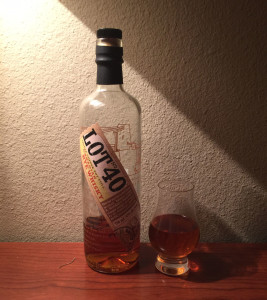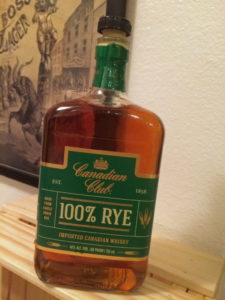Canadian Whisky 101
By Richard Thomas

(Credit: Public Domain)
World whisk(e)y has three fundamental production models. The first and most familiar to the global audience is the Irish-Scots model, based making malt whiskies with pot stills and grain whiskies with column stills. These whiskies are usually, but not exclusively aged in used barrels. This is the method adopted and then adapted by the Japanese, so three of the five major whisk(e)y-making nations use it, as well as dozens of others. In terms of volume, influence, value and reach, it’s the prevailing model.
The other familiar model is the American model. There are some examples of American-style rye and whiskeys being made in other countries, but no other country has copied and built on the American model in the way so many have with the Irish-Scots model. It is the third way of making whisky that concerns us here, though: the Canadian approach to whisky-making.
As with the Americans, the Canadians don’t have other countries taking their way of doing things and making it their own. The only place in the world you’ll find Canadian-style whisky being made is Canada, and their methods are quite distinctive, wholly separate from either the American or the Irish-Scots approach. That makes the basics of what makes whisky Canadian must-know info for anyone calling themselves a world whisk(e)y enthusiast.

(Credit: John Rayls)
How It’s Made
Although Canadian whisky is often synonymous with Canadian Rye Whisky (simply “rye” if you are actually in Canada), it can be made from any grain. A key aspect of Canadian whisky production that makes it so distinctive is that each individual grain type is milled, mashed, fermented, distilled and matured separately. So, in a Canadian warehouse one will find corn, rye, wheat and malt whiskies.
A second key characteristic is that Canadians make these one-grain spirits as either base or flavoring whiskies. Base whiskies are the bulk and foundation of what goes into the bottle, especially for mass market products. Similar to grain whisky in the Irish-Scots model, which is invariably made with an eye on being used in blended whiskies, Canadian base whisky is distilled to a high proof (180 to 190 proof — almost vodka) and aged in a used cask, making it a light spirit that is cheaper to produce. Most base whiskies are made from corn, but there are Canadian distilleries that make it from wheat or rye. Flavoring whiskies are distilled to a lower proof (in either a column or pot still or even both) and aged in either used or new oak casks.
With a slate of base and flavoring whiskies, each made from a selection of different grains, Canadian blenders then set out to create their expressions as a painter does with the daubs on his palette.

(Credit: Canadian Club)
Other key rules include that the cask a Canadian whisky is aged in must be made of wood and contain 700l or liters (185 gallons; in cask terminology, a gorda or smaller); in common with the Irish-Scots model, whisky must be aged a minimum of three years; and in common with whiskies the world over, it must be bottled at a minimum of 40% ABV. Obviously, the whisky must be made in Canada. Finally, in an interesting note that causes many a purist to scoff, Canadian whiskies may contain up to 9.09% of additives for either flavoring or coloring.



